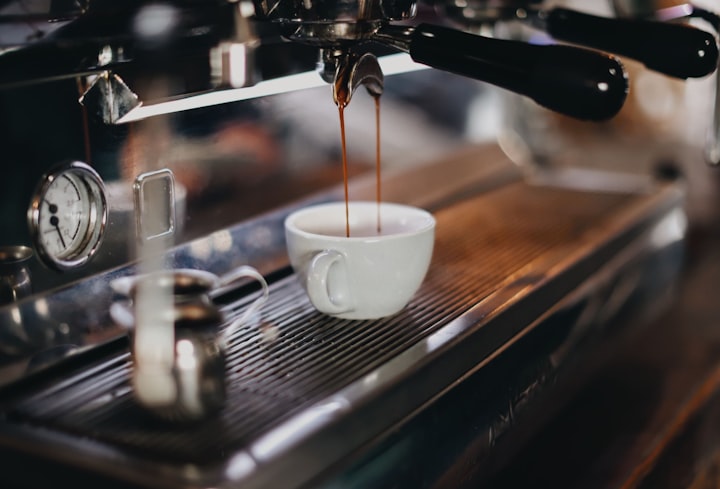
The following information is intended to provide standard information about the range of business espresso equipment currently in use in the espresso sector. Apologies in advance if I'm "teaching you how to suck balls". Acquisition has been a specialist included with Coffee Planet for many years, advising buyers and helping them choose the right equipment for their needs. Trust me when I say that there are many people who definitely question the dilemma: "What is an egg?" Specificity is information, so following it is my interpretation and how I advise buyers.
There have been many changes in the UK's interest in coffee over the last ten to fifteen years. The demand for real espresso-based coffee has skyrocketed. Quick canned coffee or, at best, pour-and-serve filter coffee devices have been the leading way to serve espresso for the past 30 decades. I can talk about previous trials where I provided espresso machines that make espresso coffee from "real beans" to food and consumer organizations. Lately such organizations have considered nothing more than a conventional espresso machine or Bean to Cup equipment. At the time, the British public was only serious about instant coffee, and espresso overseas was one of them. Companies did not see the need to go "abroad".
Fortunately, all that has changed. Along with the evolution on the Big Street, the main producers of espresso bars. The expansion of the Café Society in the British Isles, as well as the impact of your correctly recognized "American" grocery stores. The public's perception of coffee has changed and become more sophisticated. The truth is that the United Kingdom has formally become a nation of espresso drinkers. To answer this question, numerous independent companies have moved to much more innovative espresso production methods to compete in the coffee market. From the traditional Italian Espresso machine to the more advanced Bean to Cup automatic machines, you can make a variety of high-quality espresso-based coffees with ease.
In 1938, Milanese espresso bartender Achille Gaggia applied for a patent for a steamless coffee machine. Unlike its predecessors, the style and design of the Gaggia used a revolutionary piston mechanism that compresses drinking water with superior pressure coffee grounds. It was his quest for the perfect espresso in 1930s Milan that launched one of Italy's most iconic brands and heralded the espresso we all know. Standard espresso machines are the form you see in Café Nero, Costa Espresso and many others. You will find another coffee grinder, which usually comes with a drawer that is used for used coffee pucks. While most conventional espresso machines these days have computerized dosing, the espresso brewing system is manual (Artisan). Espresso shot; one or double is prepared using the equipment. The milk is frothed using the Steam Wand. The espressos are then blended together to help make the most widely used coffee. Cappuccino, latte, mocha and macchiato and so on. All plans are added to the Theater of your Espresso Society. Customers have gained a broader understanding of Artisan Coffee and are willing to shell out a lot more. Training is required to make certain quality and consistency. With the help of the application, the team will be able to provide customers with a large selection of popular coffee varieties. Brewing coffee this way is largely considered an "art form". The size and complexity of espresso equipment varies. Choosing the right device to suit organizational needs is essential and can be thought through. A person who formally has experience in making coffee and who has been serving coffee on a regular basis for a long time is recognized as a "barista". This word is part of the Italian name for a male or female bartender.

Espresso machines from beans to cups are a relatively recent innovation in the coffee device industry. The theory should be to be able to replicate, sort of, the espresso-focused coffee selection that is typically hand-brewed on an espresso machine. All within the "Button Press" framework. As discussed earlier, when using an espresso machine, the barista prepares the coffee by hand. Although this is not a long process, it will not allow the barista to prepare, for example, other food orders. In fast food retail stores where employees don't have the perfect time to make espresso, or where there is of course limited employee training, a bean-to-cup maker would be the ideal solution. Bean to Cup equipment is present in many self-service places such as cafeterias, corporate canteens. Bean to Cup machines are becoming popular in the workplace. Employees want the same espresso they get at their favorite coffee shop. Also lately many of us have Bean to Cup home appliances in the kitchen. The Bean to Cup grinds espresso beans to help you make espresso on demand. These units even have built-in automatic milk frothers that can dispense steam and frothed milk at the same time to make lattes, cappuccinos and other milky drinks. The whole process of making espresso in a Bean to Cup coffee machine is different from conventional espresso equipment. The brewing mechanism in the Bean to Cup coffee machine works in the same way as in the coffee maker. The espresso beans are poured into the brewing chamber, after which you can pump hot water with the espresso, extracting the espresso coffee. A conventional espresso maker creates a voltage that causes the water, via the group head, to generate espresso espresso.
The software of the Bean to Cup device allows you to create different shapes of drinks. These changes depend on the shape of the selected device. Typically, professional Bean to Cup equipment has eight and 12 consumption options. Essential and home bean cup makers have an individual steam arm or frother, which means the milk for cappuccino and latte needs to froth independently. These machines are ideal for home use or small jobs where less than twenty drinks are needed in one working day. Be sure to remember that when using a machine in a small business ecosystem, it must be commercially warranted. This will often not be available for very small volume consumer devices. For those who are thinking about a Bean to Cup machine for organization, it should be noted that they are built for different power classes. Machines must meet daily cups/daily requirements/estimates, consumption size and how quickly they will be claimed. All manufacturer's specifications for cups per day are based on an 8-ounce serving, with numbers spread out evenly each day. Typically, fewer beans per cup can make up to fifty cups of coffee a day. The average number of equipment varies from one hundred to one hundred and fifty every day. Medium and high volume can be 150-200 per day. A significant volume can be from 200 to 500 cups per day. Bean to Cup equipment will protest if asked about what it does beyond what it was designed to do, and may appear slow in active situations. It doesn't take much education to use the Bean to Cup equipment. No barista skills are seriously required. Some of the more impressive Bean to Cup devices have regular steam wands, so some "frothing" skills may be required. The training is much more about how to use and care for the machine. Cleansing is especially important when using the Bean to Cup device. It's a good idea to have some information about espresso beans to help you choose a blend that might suit your customers' preferences.
The last types of devices to consider when making "real" espresso are those that have been known for quite some time. Filtered coffee made from pre-ground espresso. The type of equipment depends on the required volumes. One example is that resorts may well require a significant amount of coffee for breakfast. Convention centers will require significant volumes of coffee breaks for seminars. In addition, function rooms, employee canteens and theaters where there is a high demand for pure espresso in a very limited time. In this case, the Bulk Brew espresso equipment is highly recommended. This equipment can produce between 30 and 140 liters of fresh filter coffee per hour. There is a choice of well-known manufacturers of espresso machines Pour and Serve and Bulk Brew. Pour and Serve espresso machines range from a simple espresso machine with two Jug filters and two firing plates to several very hot Pour and Serve plates for almost 4 jugs. The last word usually belongs to the Bulk Brew coffee machine. They have one or two cooking columns. They have removable brew containers that can store almost forty liters of coffee. Convenient control panels with LCD display make it easy to adjust the moment of brewing and the required amount of coffee. Removable brew containers mean that large volumes of coffee are usually served at the same time in different zones. Another type of filter coffee machine can be Bravilor's RLX coffee machine. These can be modular refreshing filter machines with additional hot water and steam functions, ideal for producing hot drinking water for tea and steam for frothing and steaming milk.
I hope this post helps you find the right type of espresso machine for your personal business needs.
Thank you So much for you to reading till the end, and please kindly to support me as you could, I would be appreciate it. Have a great day:D
About the Creator
Eful
Hi there, I am Syaefullah Nur from Indonesia. I am reader and now I try to providing my best articles for you guys. Enjoy it;)






Comments
There are no comments for this story
Be the first to respond and start the conversation.